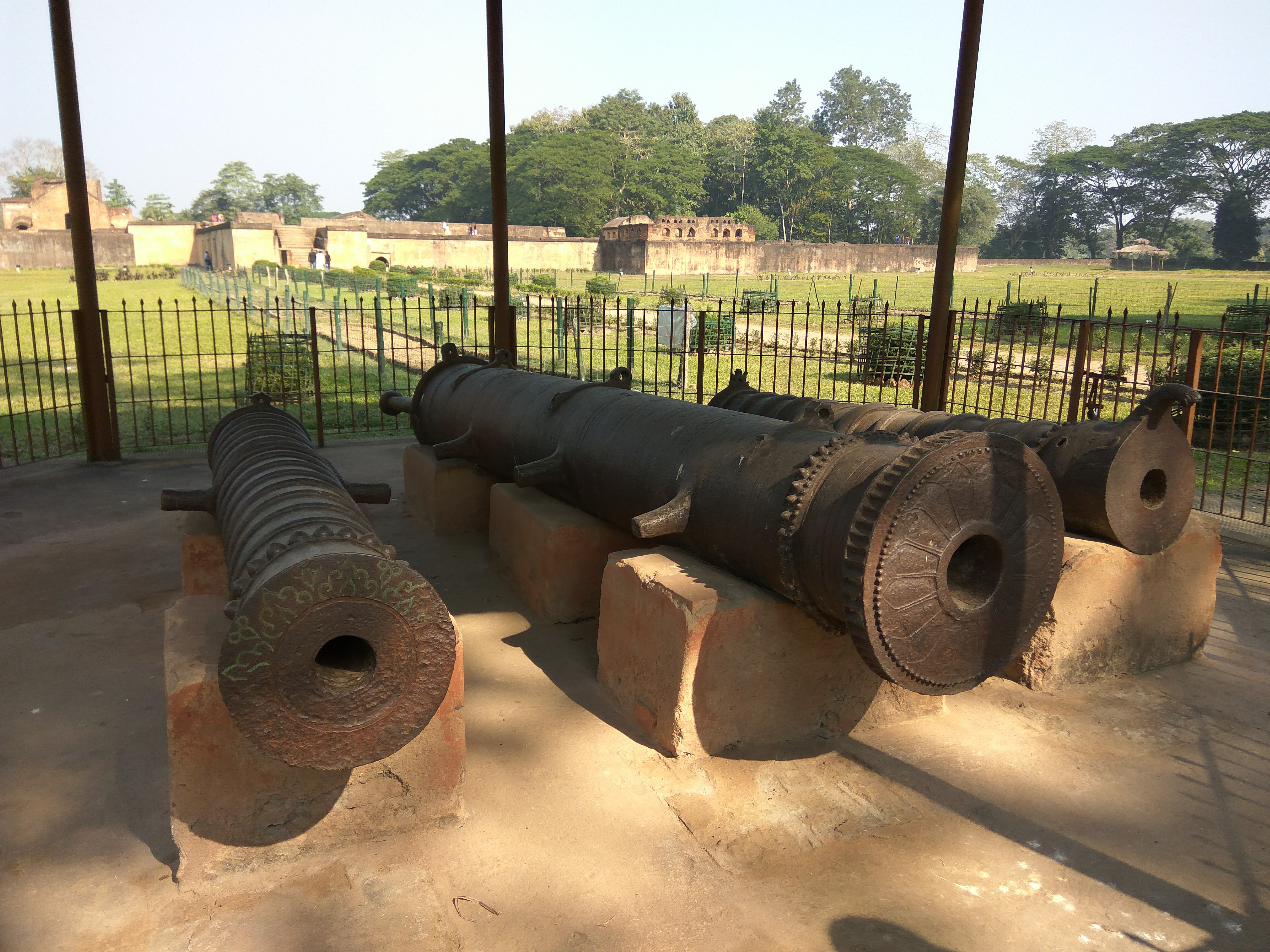Bagh Hazarika on:
[Wikipedia]
[Google]
[Amazon]
Ismail Siddique, popularly known as Bagh Hazarika,Bimal J. Dev, Dilip Kumar Lahiri. ''Assam Muslims: politics & cohesion''. Mittal Publications, 1985
Pg 3
/ref> was a
 In this first conflict, the
In this first conflict, the
Pg 3
/ref> was a
17th-century
The 17th century lasted from January 1, 1601 (Roman numerals, MDCI), to December 31, 1700 (Roman numerals, MDCC). It falls into the early modern period of Europe and in that continent (whose impact on the world was increasing) was characterized by ...
warrior who fought against the Mughals for the Ahom kingdom. He is culturally represented as ''"Hero of Indigenous Muslim Communities in Assam"''. He was born in an Assamese Muslim
Assamese may refer to:
* Assamese people, a socio-ethnolinguistic identity of north-eastern India
* People of Assam, multi-ethnic, multi-linguistic and multi-religious people of Assam
* Assamese language, one of the easternmost Indo-Aryan language ...
family at Dhekerigaon village near Garhgaon
Gargaon (Pron:/gɑ:ˈgɑ̃ʊ/) is a town in Assam, India and was the capital of the Ahom kingdom for many years. It was built by the Ahom king Suklenmung (Gargoyaan Rojaa) in 1540. It is said that the capital was built at the suggestion of ...
in Assam
Assam (; ) is a state in northeastern India, south of the eastern Himalayas along the Brahmaputra and Barak River valleys. Assam covers an area of . The state is bordered by Bhutan and Arunachal Pradesh to the north; Nagaland and Manipur ...
Legend
The legend around his origins states that there was once a tiger that had entered his village and Ismail Siddique, who was unarmed, killed the tiger barehanded. The news of this valour reached the Ahom king Chakradhwaj Singha and he called the young man to his court to display his strength. The king was impressed by the show of strength and appointed Ismail as a ''Hazarika
Hazarika was a Paik officer under the administration of the Ahom kingdom and Koch kingdom. The commander over 1,000 (''Hazar'') ''paiks'' was known as a ''Hazarika''. As it was a purely administrative position, the title holder could belong to ...
'', an Ahom Ahom may refer to:
*Ahom people, an ethnic community in Assam
* Ahom language, a language associated with the Ahom people
*Ahom religion, an ethnic folk religion of Tai-Ahom people
*Ahom alphabet, a script used to write the Ahom language
* Ahom kin ...
office in charge of 1000 ''paiks''. This event marks the beginning of the legend of the brave ''Bagh'' ("Tiger" in Assamese language
Assamese (), also Asamiya ( ), is an Indo-Aryan language spoken mainly in the north-east Indian state of Assam, where it is an official language, and it serves as a ''lingua franca'' of the wider region. The easternmost Indo-Iranian language, ...
) ''Hazarika'' that culminated in his acts of bravery during Battle of Saraighat
The Battle of Saraighat was a naval battle fought in 1671 between the Mughal Empire (led by the Kachwaha raja, Ram Singh I), and the Ahom Kingdom (led by Lachit Borphukan) on the Brahmaputra river at Saraighat, now in Guwahati, Assam, In ...
.
Military career
 In this first conflict, the
In this first conflict, the Mughal
Mughal or Moghul may refer to:
Related to the Mughal Empire
* Mughal Empire of South Asia between the 16th and 19th centuries
* Mughal dynasty
* Mughal emperors
* Mughal people, a social group of Central and South Asia
* Mughal architecture
* Mug ...
forces were well entrenched on the hills of the north bank of the Brahmaputra river
The Brahmaputra is a trans-boundary river which flows through Tibet, northeast India, and Bangladesh. It is also known as the Yarlung Tsangpo in Tibetan, the Siang/Dihang River in Arunachali, Luit in Assamese, and Jamuna River in Bangla. It ...
with a chain of huge cannons. Bagh Hazarika suggested a plan on how to disable the Mughal guns to the Ahom General Lachit Borphukan
Lachit Barphukan was an Ahom commander, known for his leadership in the Battle of Saraighat that thwarted an invasion by Mughal forces under the command of Ramsingh I.
Biography
Lachit was born to Momai Tamuli, a commoner who rose to the ran ...
, the royal minister Atan Burhagohain and other generals. Impressed by the plan, they entrusted Bagh Hazarika with command to lead the operation.
That night an advance party led by Bagh Hazarika along with a few soldiers crossed the Brahmaputra by boat and landed on the northern bank of the river and laid in wait for the right moment. While the Mughal soldiers were busy saying their Fajr or dawn prayers, Bagh Hazarika and his soldiers climbed the high embankments and poured water into the Mughal cannons, rendering them useless.
Some time later, the Ahom army announced their advance by blowing the trumpets. In response, the Mughal soldiers rushed to their posts and tried to fire the cannons at the advancing Ahom forces. But, the wet cannons would not work. The Ahom forces used their cannons to the full strength and the Ahom army landed safely on the north bank and attacked ferociously as the Mughal soldiers retreated helplessly.
This victory had proved the courage and valour of Bagh Hazarika beyond any doubt and he was felicitated by the King. Bagh Hazarika thus went down in the annals of Assam history as a highly skilled front ranking military officer.
References
{{DEFAULTSORT:Hazarika, Bagh Military personnel from Assam 17th-century soldiers